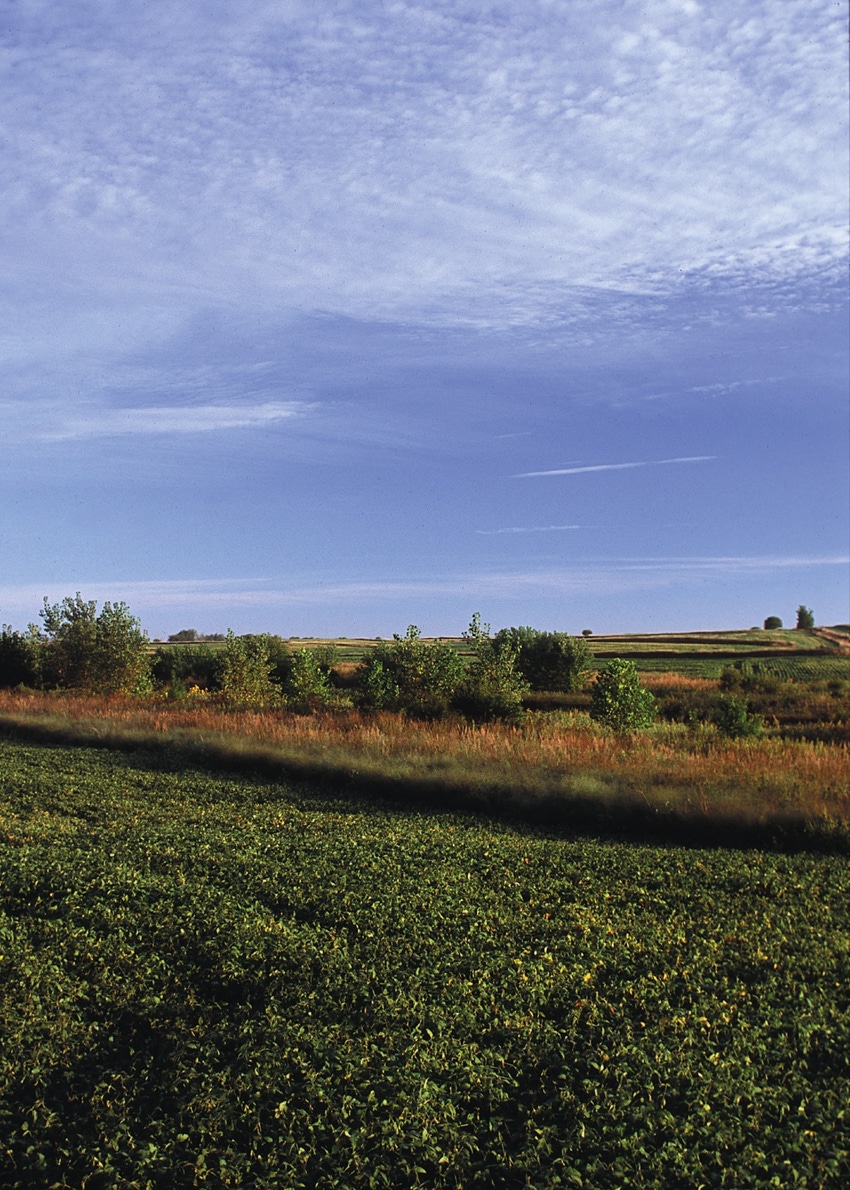October 9, 2012

Agriculture Secretary Tom Vilsack today underscored the Obama Administration’s commitment to partnerships in conservation by announcing the allocation of 400,000 acres to support conservation and restoration of wildlife and their habitats as part of the Conservation Reserve Program, or CRP. Under Vilsack’s leadership, the USDA has enrolled more than 12 million acres in CRP, a voluntary program available to agricultural producers to help them use marginal and environmentally sensitive land to bring conservation and economic benefits for their land and communities. The announcement of 400,000 state acres for wildlife enhancement (SAFE acres) fulfills Vilsack’s commitment made last spring to commit 1 million acres for special initiatives to restore grasslands, wetlands and wildlife habitat.
“Since 2009, USDA has worked with producers and private landowners to enroll a record number of acres in conservation programs,” says Vilsack. “These efforts have not only conserved our natural resources, but bolstered rural economies for current and future generations. That’s why it’s important for Congress to pass comprehensive, multi-year food, farm and jobs legislation – so that America’s rural communities have certainty that millions of acres of conservation lands will be there tomorrow to sustain and create jobs in the small businesses that reinforce our tourism and recreation industry.”
With 400,000 SAFE acres available, USDA will work with producers and landowners to target habitat for high-priority species like the lesser prairie chicken and sage grouse, as well as game species like pheasants and quail that providing hunting opportunities and support rural jobs. Existing projects in 20 states will be able to add up to 280,000 combined acres for all projects, including prairie, wetlands, forest and savanna habitat restoration. In addition, more than 100,000 acres were added to target species as diverse as northern scarlet snakes, ferruginous hawks and the American woodcock.
SAFE is a voluntary continuous CRP practice that conserves and restores habitat for wildlife species that are threatened or endangered, have suffered significant population declines or are important environmentally, economically or socially. SAFE is currently capped at 1.25 million acres nationally. Acres are now allocated across 97 SAFE projects located in 36 states and Puerto Rico.
Under SAFE, state fish and wildlife agencies, non-profit organizations and other conservation partners work collaboratively to target CRP delivery to specific conservation practices and geographic areas where enrollment of eligible farm land in continuous CRP will provide significant wildlife value. USDA’s Farm Service Agency (FSA) monitors SAFE and other continuous CRP activity and manages available acres to ensure that CRP goals and objectives are being met.
The Food Security Act of 1985, Section 1231(a), as amended, provides authority to enroll land in CRP through Sept. 30, 2012.However, no legislation has been enacted to reauthorize or extend this authority; therefore, CRP currently is unable to enroll new acres.
In March, Vilsack announced USDA’s intent to enroll up to 1 million acres in a new CRP grasslands and wetlands initiative meant to target environmentally sensitive land through continuous signups. FSA has set aside acres within CRP for specific enrollments that benefit duck nesting habitat, upland birds, wetlands, pollinators and wildlife. In addition, USDA announced a continuous sign-up of highly erodible cropland, which seeks to protect the nation’s most environmentally sensitive lands. The Highly Erodible Cropland initiative permits landowners to enroll up to 750,000 acres of land with an Erodibility Index (EI) of 20 or greater.
CRP is one of America’s most valuable and vital conservation efforts, ensuring cleaner air and water, preventing soil erosion, and enhancing economic opportunity in rural America by supporting recreation and tourism. The approach to target the most sensitive lands is essential to maintain the substantial benefits of CRP while ensuring that productive farmlands continue to produce America’s food, feed, fiber and renewable fuel.
Highlights of CRP
CRP prevents the erosion of 325 million tons of soil each year, or enough soil to fill 19.5 million dump trucks.
CRP has restored more than 2 million acres of wetlands and 2 million acres of riparian buffers.
Each year, CRP keeps more than 600 million pounds of nitrogen and more than 100 million pounds of phosphorous from flowing into our nation’s streams, rivers and lakes.
CRP provides $1.8 billion annually to landowners – dollars that make their way into local economies, supporting small businesses and creating jobs.
CRP is the largest private lands carbon sequestration program in the country. By placing vulnerable cropland into conservation, CRP sequesters carbon in plants and soil, and reduces both fuel and fertilizer usage. In 2010, CRP resulted in carbon sequestration equal to taking almost 10 million cars off the road.
As part of President Obama’s America’s Great Outdoors Initiative, the administration is opening up recreational access to lands and waters, supporting the creation of urban parks and trails, increasing youth employment in conservation jobs and making historic investments in large landscapes such as the Everglades. The initiative is empowering locally led conservation and outdoor recreation efforts, from supporting the working landscapes of the Dakota Grasslands and longleaf pine in the southern U.S., to designating the Chimney Rock National Monument in Colorado, to countless other success stories across the country.
In 2011, USDA enrolled a record number of acres of private working lands in conservation programs, working with more than 500,000 farmers and ranchers to implement conservation practices that clean the air we breathe, filter the water we drink, and prevent soil erosion. Moreover, the Obama Administration, with Vilsack’s leadership, has worked tirelessly to strengthen rural America, implement the farm bill, maintain a strong farm safety net, and create opportunities for America’s farmers and ranchers. U.S. agriculture is currently experiencing one of its most productive periods in American history thanks to the productivity, resiliency and resourcefulness of our producers.
You May Also Like




